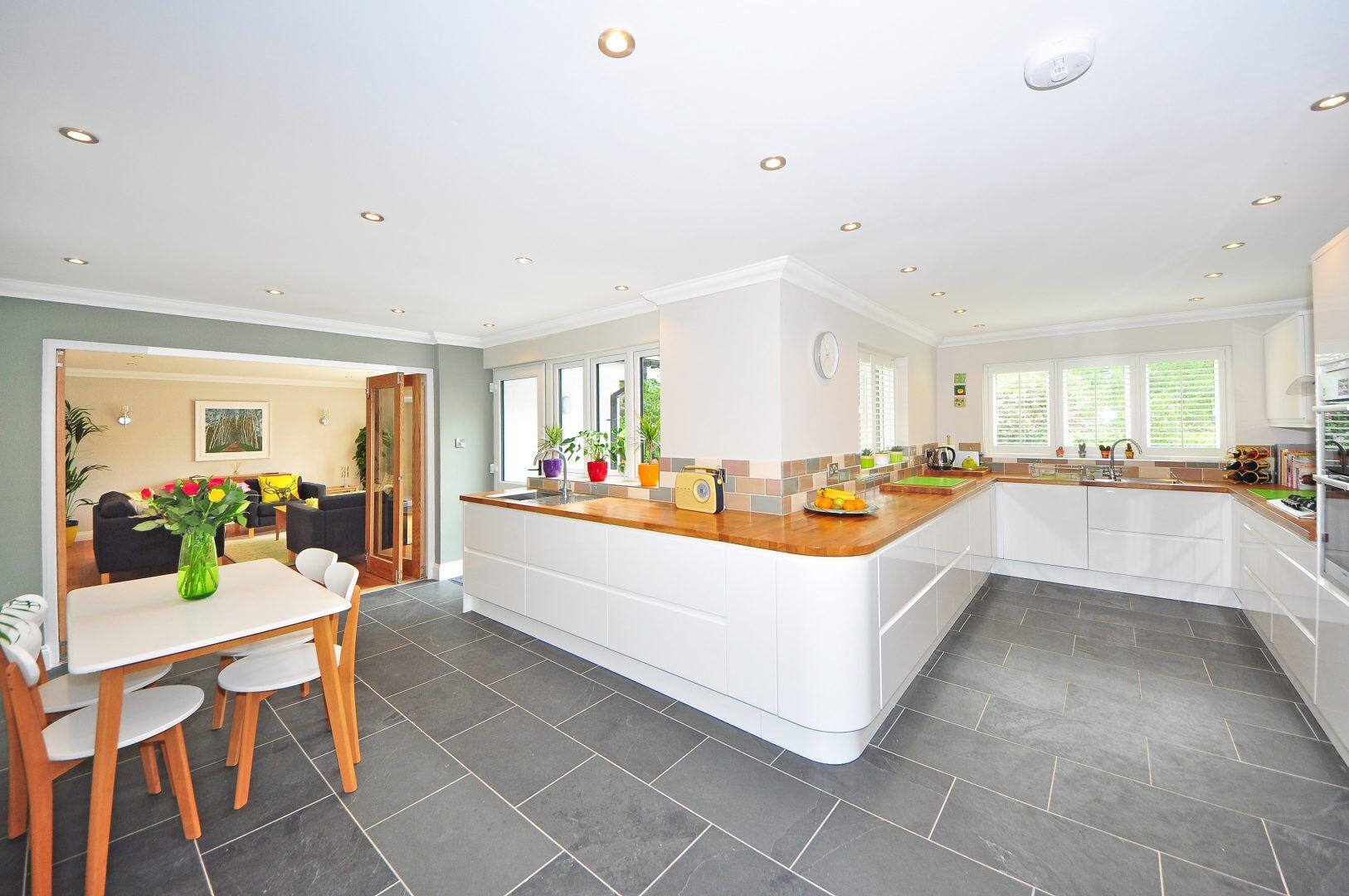
Why the Small Details in Kitchen Design Matter
When it comes to kitchen design, we often make the big decisions first and worry about the smaller details later, or in some cases, overlook them entirely. While choosing your cabinets and worktops first is a great starting point, all the finer details add up to the overall look and feel of your kitchen. This means that the details are almost, if not just as important as the big decisions.
Read on to find out why the small details in kitchen design matter, and our guide to making the right decisions to create the overall look and finish that you desire…
What are the Small Details in Kitchen Design?
We can categorize the big decisions as to the worktop material and layout, and layout of your cabinets. Everything else is considered a small and complimentary detail.
These can include:
- Kitchen handles
- Cabinet door style
- Cabinet door colour
- End panel style
- End panel colour
- Plinth colour
- Worktop thickness
- Worktop colour
- Tiles/splashback
- Flooring
- Appliance style and colour
- Lighting
- Sink style
- Tap style
- Any additional design features such as glass-fronted cabinets, pelmets and cornicing
As you can see, it’s a long list, and it might look like a lot of decisions to make, which is why it’s worth getting to grips with things way in advance, to avoid making any poor on the spot decisions that you may later come to regret.
Creating Harmony and Balance
The kitchen should work together as one. This can be done by creating a balance between the design elements. Nothing should be jarring, with no two elements fighting against one another, unless you’re aiming to create a unique and bold look. Elements that don’t work well together can be unsettling, which is the opposite of how you want your kitchen to make you feel. The kitchen should be a space where you feel calm and in control, and design plays a huge role in this.

Once you have created your unit and worktop layout, it’s time to fill in the details, with harmony and balance being at the focus. This doesn’t have to mean design features with low impact, it just means taking the time to carefully consider how everything will work together.
For example, if you choose brass cup handles in a traditional design, you may also want to choose shaker cabinet doors to complement this look. From here you might choose a contrasting colour to make your handles stand out and to add a modern touch to your traditional kitchen. A deep blue or green would work brilliantly. It’s fine to mix old and new styles, but in a way that isn’t jarring and instead ensures each design, feature complements or enhances the other.
Here’s a little more information on each design element…
Kitchen Cabinets & Handles
One of the first decisions you should consider making is the style of cabinets you will have, the colour, and what kind of handles if any. These are larger details and will most likely influence the rest of the decisions that you make. However there may be something very specific that you have in mind for another element, such as the colour of the worktop or the type of tiles you want, and this may influence what you choose in terms of colours and styles for your units.

One of the beauties of going bespoke for your cabinets means that your options are endless. When making these crucial decisions, carefully consider elements of your home, such as light, age and the overall look and feel of the rest of the home. Do you want your kitchen to flow with the design throughout the rest of the house, or do you want it to stand apart from the rest? Making these decisions early on will help shape the first steps in considering the details, both large and small.
Worktops
When choosing worktops, you need to consider the material, colour and size. Material is often dictated by budget, and so is usually a big decision that is made early on. Next, consider the colour - do you want your worktops to be a contrasting feature against your units, or would you prefer something that almost matches?

Consider light here too - choosing white or light worktops with a reflective surface will help bounce the light around the room, whereas dark and matte options may reduce light levels. Some rooms can take dark worktops, whereas others need a little helping hand with light levels. If you’re going to a country style, wood might be a good option. If you choose wood worktops, think about the tone of the wood and how light or dark you go.
You’ll need to make a decision on worktop thickness too - worktops generally start from a 270mm thickness and go up to 400mm. 400mm is more traditional, but thinner worktops can look very sleek and more contemporary. You might want to consider curved edges on some or all of the corners of your worktops. Curved edges will help with flow, and will soften the look.
End Panels, Plinths, Pelmets and Cornices
Whether you use pelmets and cornices really depends on the style of kitchen you choose, and whether you have any floor to ceiling units or wall cupboards. Cornices and pelmets can finish off the upper part of a unit nicely, particularly when choosing a more traditional style like a shaker kitchen.
Generally, end panels and plinths are necessary for most kitchen designs and add that polished finish. End panels and plinths are usually in the same colour as the kitchen cabinets and doors.
Open Shelving & Glass Fronted Cabinets
Some people choose open shelving as an alternative to wall units to help a room feel larger and more open. If considering open shelving, think about whether you might have floating shelves or brackets. If choosing brackets, a great way to tie your shelving in is to use the same material as your kitchen handles - brass for example. At this point, it’s also important to consider what colour you might paint the walls - if white, choose white shelving if you want the shelves to disappear into the wall and make the items on the shelving stand out. To add a country twist, try reclaimed wood.
An alternative to open shelving is glass-fronted cabinets, which will help with that open feel, but keep items slightly more concealed and away from dust.
Appliances

If your appliances are being built in, then you don’t have to give too much thought into the look of them, just the function. However built-in ovens, microwaves and hobs are usually partly on a show and so the design of these does matter. Consider whether you want these appliances to stand out, or fit in for a streamlined approach. If you’re going for dark cabinet doors, go for dark appliances to seamlessly blend, or match silver details in your kitchen with silver appliances to stand out.
Tiles, Splashbacks and Flooring
These decisions are often made after choosing the cabinet colour and style, as well as the worktop colour and size. In some cases though, this might work the other way around if you have found a tile that you’ve fallen in love with, or if you have your heart set on herringbone wood flooring.

Consider the light and dark elements again - if your focus is on creating a light, bright and airy kitchen, light tiles and flooring is a must. Again you can use gloss tiles here to help reflect light. Or if you want to create a contrast and a design statement, go for something dark which will be more striking against light units. Consider style here too - do you want to go for something modern, or might a timeless style be better suited if you have a period home?
Lighting
This plays a really important role in kitchen design, and it’s important to consider it early on so that any electrics can be moved around and put in place before your new kitchen is fit. Lighting to consider includes - spot/ceiling lights, plinth lighting, under cupboard lighting, under shelving lighting, wall lights, over island lighting.

Again think about how your lighting choices might enhance your design - are there areas that you’d prefer to be in bright light, and others that would be better in low light? As an example, you might use a brass pendant light over your dining table that can be put on independently a more intimate setting.
Sinks & Taps
Not just practical, the sink and tap play an important role in the design. When it comes to your sink consider shape, style and materials. In a more traditional kitchen, you might choose a butler’s sink in white ceramic, or for a more modern style try a black square sink to contrast with light coloured worktops.

Taps can be tied in with kitchen handles or any other hardware. Try a brass tap to match brass handles, and go for a traditional design if your handles are traditional, or modern if using modern handles such as t-bars.
For any further advice or assistance in creating your dream kitchen, including the finer details, get in touch:
Contact us

